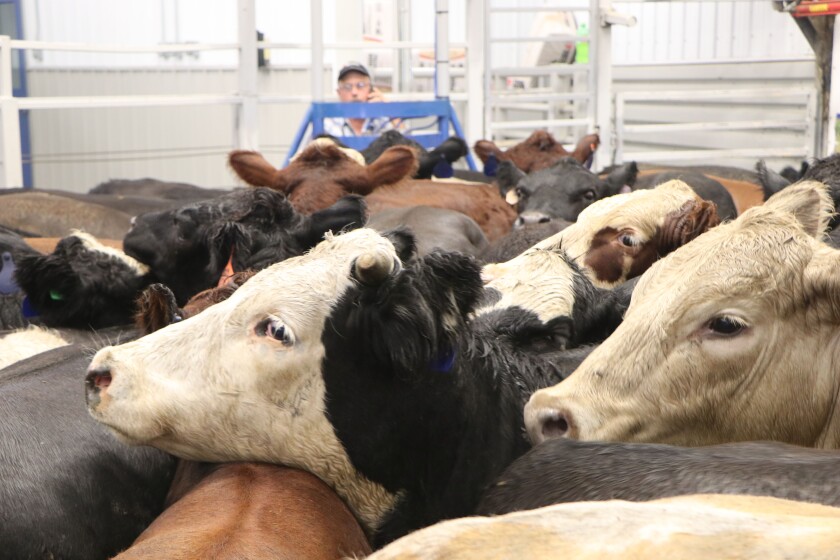Expert Guidance: Bagley Risk Management Strategies
Expert Guidance: Bagley Risk Management Strategies
Blog Article
Recognizing Livestock Threat Protection (LRP) Insurance Coverage: A Comprehensive Overview
Browsing the world of animals threat protection (LRP) insurance can be a complicated venture for numerous in the farming sector. From just how LRP insurance coverage operates to the various coverage alternatives readily available, there is much to discover in this extensive overview that can potentially form the means animals producers approach danger monitoring in their organizations.

How LRP Insurance Coverage Works
Sometimes, understanding the mechanics of Livestock Threat Security (LRP) insurance coverage can be intricate, however damaging down how it works can provide clarity for farmers and breeders. LRP insurance is a threat administration tool developed to safeguard livestock manufacturers against unforeseen cost decreases. It's vital to keep in mind that LRP insurance is not a profits warranty; rather, it focuses only on rate threat security.
Qualification and Protection Options

When it comes to insurance coverage alternatives, LRP insurance policy supplies producers the flexibility to choose the protection degree, protection duration, and recommendations that ideal fit their danger monitoring demands. Insurance coverage levels generally vary from 70% to 100% of the expected ending worth of the insured animals. Producers can additionally choose insurance coverage periods that line up with their production cycle, whether they are guaranteeing feeder livestock, fed livestock, swine, or lamb. Endorsements such as rate risk security can even more tailor coverage to protect versus negative market fluctuations. By comprehending the qualification standards and protection choices readily available, livestock manufacturers can make informed choices to manage threat properly.
Benefits And Drawbacks of LRP Insurance Policy
When evaluating Livestock Danger Defense (LRP) insurance coverage, it is essential for livestock manufacturers to evaluate the advantages and disadvantages intrinsic in this danger administration tool.

One of the key benefits of LRP insurance is its ability to offer protection against a decrease in livestock costs. Additionally, LRP insurance supplies a level of flexibility, allowing manufacturers to tailor protection degrees and policy periods to suit their specific needs.
One constraint of LRP insurance coverage is that it does not secure against all types of dangers, such as illness episodes or all-natural catastrophes. It Read More Here is vital for manufacturers to very carefully examine their individual threat direct exposure and economic scenario to figure out if LRP insurance policy is the right danger management tool for their operation.
Understanding LRP Insurance Coverage Premiums

Tips for Making The Most Of LRP Perks
Maximizing the benefits of Animals Threat Defense (LRP) insurance needs tactical preparation and aggressive risk monitoring - Bagley Risk Management. To make the most of your LRP coverage, take into consideration the complying with tips:
Regularly Examine Market Problems: Keep informed regarding market fads and rate fluctuations in the livestock industry. By keeping an eye on these factors, you can make informed decisions regarding when to acquire LRP protection to safeguard against possible losses.
Establish Realistic Insurance Coverage Degrees: When choosing protection levels, consider your production expenses, market worth of animals, and possible dangers - Bagley Risk Management. Setting realistic protection degrees makes certain that you are adequately protected without paying too much for unnecessary insurance
Expand Your Insurance Coverage: Rather than relying exclusively on LRP insurance coverage, think about diversifying your threat monitoring approaches. Incorporating LRP with various other risk management tools such as futures agreements or alternatives can offer comprehensive protection against market unpredictabilities.
Review and Adjust Protection Consistently: As market problems transform, occasionally examine your LRP coverage to ensure it lines up with your current threat exposure. Readjusting coverage degrees and timing of acquisitions can assist optimize your threat protection technique. By complying with these ideas, you can maximize the advantages of LRP insurance and secure your animals procedure against unforeseen threats.
Final Thought
To Recommended Site conclude, livestock threat defense (LRP) insurance policy is an important device for farmers to handle the financial dangers associated with their livestock operations. By recognizing exactly how LRP functions, eligibility and protection alternatives, in addition to the pros and cons of this insurance, farmers can make informed decisions to safeguard their livelihoods. By thoroughly considering LRP premiums and applying methods to make the most of benefits, farmers can reduce possible losses and make certain the sustainability of their procedures.
Livestock producers interested in obtaining Animals Risk Defense (LRP) insurance can discover an array of eligibility standards and coverage options tailored to their particular animals operations.When it comes to coverage alternatives, LRP insurance coverage offers manufacturers the versatility to select the protection level, coverage duration, and endorsements that finest suit their danger monitoring requirements.To grasp the details of Livestock Risk Security (LRP) insurance coverage completely, recognizing the variables affecting LRP insurance premiums is crucial. LRP insurance premiums are established by various aspects, consisting of the insurance coverage degree picked, the anticipated price of animals at the end of the protection duration, the kind of livestock being insured, and the size of the coverage period.Review and Readjust Coverage Routinely: As market conditions transform, regularly examine your LRP insurance coverage to ensure it aligns with your existing risk exposure.
Report this page